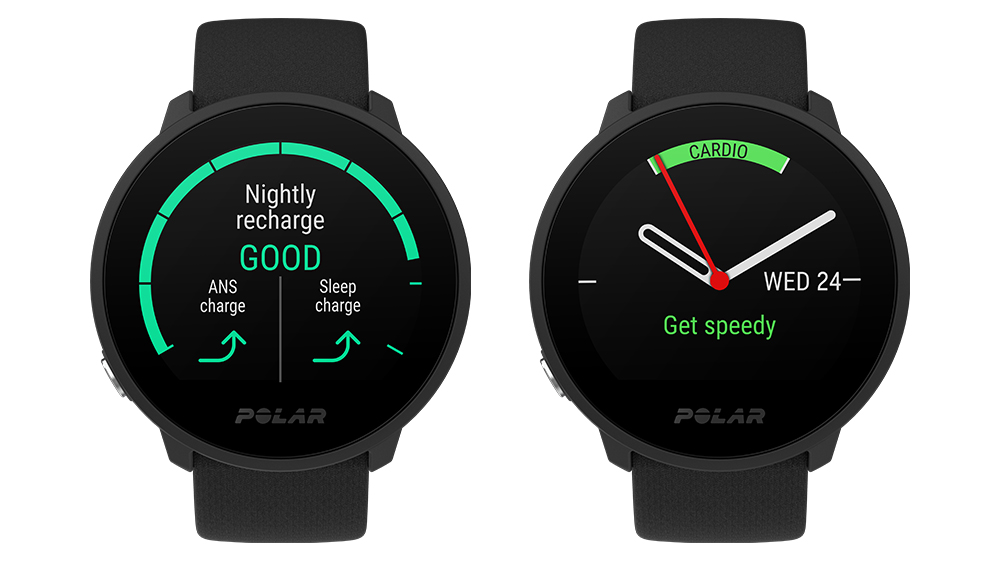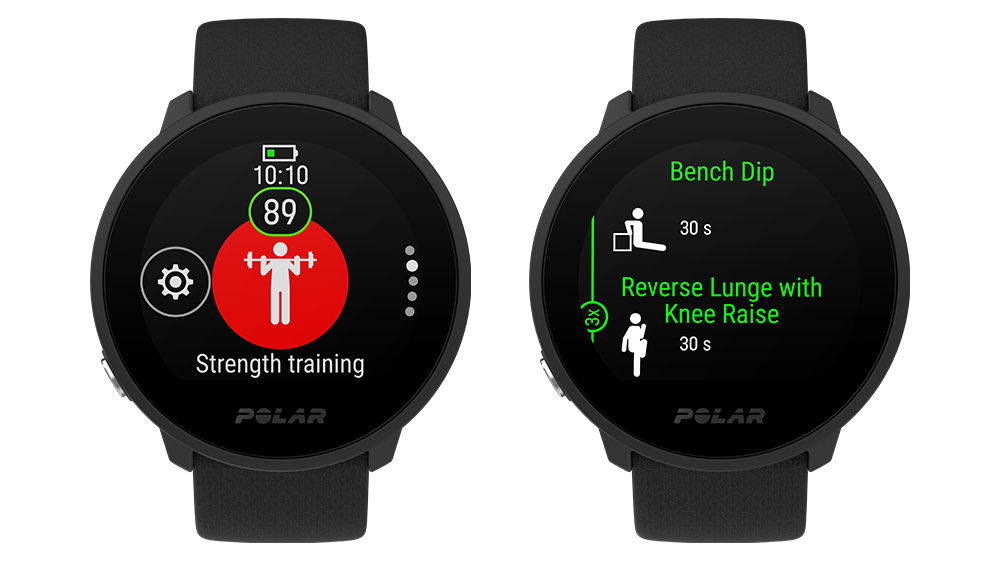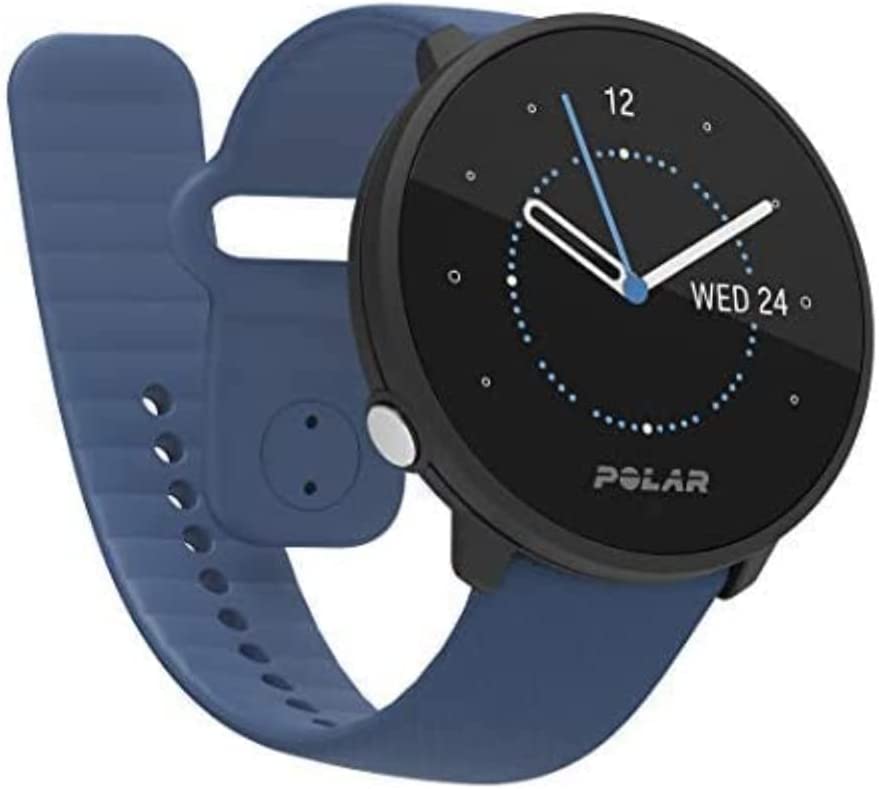You can trust Coach
Polar has established itself as a favourite among keen runners and triathletes, with a line-up of feature-rich watches that offer precise tracking and detailed training analysis.
That makes the Unite an unusual release. By dropping built-in GPS, Polar seems to be aiming for beginners who are looking for help getting fit and at gym-goers.
So if you’re a dedicated runner the Polar Unite is not the budget watch you should be considering. There are many better options that have built-in GPS, including the Garmin Forerunner 35 and 45, and Polar’s own Ignite. However, if you’re just starting out, the Unite bears serious consideration.
The watch has a simple design that mimics the one-button set-up on the Ignite, but with a plastic case. The colour touchscreen is bright but doesn’t match the vivid displays you’ll get on a similarly-priced smartwatch like the Huawei Watch GT 2e (£159.99, currently reduced to £139.99), although it beats Fitbit’s Charge 4 (£129.99) greyscale screen hands down.
The Unite’s touchscreen is also slow to respond at times, and the watch’s raise-to-wake feature is also sluggish, to the point where I’d prefer to press the button to turn the screen on.
On the underside of the watch is Polar’s Precision Prime heart rate sensor, which underpins most of the best features on the Unite, in particular the detailed sleep tracking and FitSpark workout recommendations.
Those are tied together. The Unite will track how well you recover each night based on your heart rate variability and breathing rate alongside things like your overall time asleep and the number of interruptions you suffered overnight. Based on that info, you’ll be recommended a variety of workouts to do each day.

The workouts are divided into three categories. Cardio sessions can be done via any form of exercise that gets your heart pumping, because the guided workout is entirely based on your heart rate. The Unite will tell you which heart rate zone to be working in, whether you’re running, on an elliptical or just doing hundreds of jumping jacks.
There are also guided strength workouts, with stick person animations to show you how to do each move, and supportive sessions that focus on stretching and core moves. All the suggested workouts are based on how well you’ve slept, so in theory you won’t be told to go and run for two hours if you’ve had a terrible night.

In practice, I did find the Unite was sometimes a little ambitious with its workout recommendations, especially for a watch aimed at beginners. After a night of sleep it rated as “compromised”, my cardio recommendations were a tough 54-minute tempo run or an easy run of over an hour, while the primary strength recommendation was a 51-minute workout. An alternative 30-minute bodyweight workout was the only suggestion that seemed to fit with the poor night’s sleep the Unite had detected.
Of course you can ignore these workouts and do your own – the watch tracks pretty much every type of exercise bar triathlon. For outdoor activities like running and cycling, the Unite will link to your phone’s GPS to add accuracy, or you can rely on the accelerometer in the watch to track your run distance.
The lack of GPS is disappointing. Even if you always run with your phone, as I do, connected GPS is not as accurate as built-in GPS. And even though the Unite is cheaper than other Polars at £134.50, there are many devices for that price or less that have built-in GPS. Both the Watch GT 2e and Fitbit Charge 4 do.
Not having built-in GPS also doesn’t seem to result in better battery life. The Unite’s battery drained by around 20 percentage points an hour when I was running with an always-on screen (I don’t want to press a button or wait for the autowake to get its act together every time I want to glance at my stats). This is well short of the 50 hours Polar suggests the Unite will achieve in training mode with both the heart rate tracking and connected GPS enabled, though I’m sure I could make the battery last longer by not having the screen on.
It’s another sign that the watch is better for gym-goers, because training without connected GPS on doesn’t sap the battery so much. I’d still say you want the screen always-on during workouts, especially when following instructions from the Unite.
See related
- Best Fitness Trackers
- The Best Fitness Smartwatches
- Polar Ignite Review: An Extremely-Smart Budget GPS Watch
The Unite tracks your everyday activity but if you follow your step count closely, be prepared for some unusual numbers. Polar’s step tracking takes into account all your activity and assigns step values to things like indoor cycling, so my count was always inflated well beyond what a Garmin on my other wrist had recorded.
I can see why Polar does this: if step count is your main target each day you want all activities to help you towards it. But there is also a general activity goal on the watch, so Polar could have used the steps tally to just track, well, steps.
The overall activity goal on the Unite can be set to one of three levels, one being the easiest and three being a target that even very active people will find tough to hit every day. There are also inactivity alerts on the watch, but I’ve not had one from it yet despite spending a lot of time sitting at my computer. This is a problem I’ve encountered with other Polar watches too – the inactivity alerts don’t seem to trigger when they should.
A couple of other small annoyances with the Unite are its strap, which is oddly hard to do up tightly without popping it open again, and the charger, which is a cradle with a USB attachment on it. Not adding to the collection of cables everyone has is a good idea on one hand, but this approach also means the charger is small and easy to lose.
The Unite is not without its flaws, but for the price it offers an impressive package for people who want to get fit and aren’t entirely sure how to go about it. There’s no doubt the Unite’s guided training features will get you in shape if you follow them closely, and it’s a fairly attractive watch to wear all the time for activity tracking as well.
If you want all that plus GPS, you can get the Polar Ignite, which is £174.50; those who want a better-looking watch for a similar price should go for the Huawei Watch GT 2e, which has GPS but lacks Polar’s guided workout features. Fitbit’s Charge 4 band has GPS and does offer workouts and training programmes through Fitbit Premium, but that’s an additional monthly subscription which seems a bit much when you’re spending £130.

£84.32Buy now
Buy from Polar | £134.50

Nick Harris-Fry is a journalist who has been covering health and fitness since 2015. Nick is an avid runner, covering 70-110km a week, which gives him ample opportunity to test a wide range of running shoes and running gear. He is also the chief tester for fitness trackers and running watches, treadmills and exercise bikes, and workout headphones.

